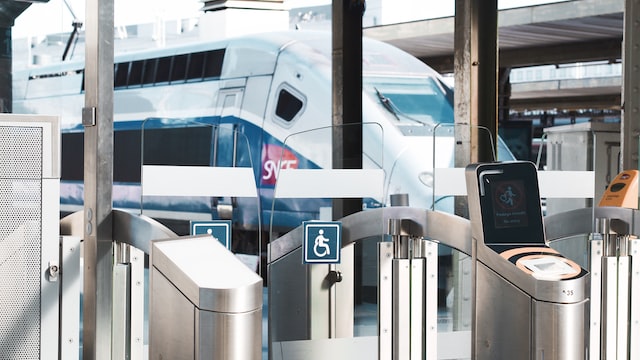
The Americans with Disabilities Act (ADA) contains regulations to ensure people with disabilities can access facilities just as those without them.
If you have a public facility, such as a government agency or a company with 15 or more employees, this means that your entrances, including turnstiles and security gates, are required to abide by the law and, therefore, be accessible to people with disabilities.
How can you ensure your turnstiles and security gates are ADA complaint? The following tips can help you create entrances that are accessible to all.
Ensure Turnstiles and Swing Gates Are the Appropriate Widths
Traditional turnstiles, such as three-armed turnstiles, are not accessible to people with disabilities because of their height and width—they cannot accommodate people who use wheelchairs and walkers. Although these conventional turnstiles provide security at entrances, they are not ADA-compliant.
While your business can still utilize regular turnstiles, you can make your facility more accessible and comply with ADA regulations by providing an accessible turnstile for people with disabilities. These turnstiles should have a minimum width of 32 inches and up to 36 inches, depending on the depth of the turnstile [1].
The same is true for swing gates—the minimum opening should be 32 inches to allow those with a wheelchair, walker, or other accessibility devices, such as a cane or crutches, to pass through easily.
Alternate Regular Turnstiles and Handicap Accessible Turnstiles
You don’t have to sacrifice security just to comply with ADA standards and make your facility more accessible. You can provide both regular turnstiles and handicap-accessible turnstiles, even alternating the two to prevent the security risk of having one large area of turnstiles or swing gates for people with disabilities.
Altering existing turnstiles is also possible to comply with the act. For example, you can turn a turnstile into a swing gate that has a wider opening to make it accessible. You can also provide swing gates in addition to standard turnstiles to provide accessible entrances [2].
Conventional turnstiles are about 30 inches wide but can be wider or narrower, depending on your preference. If you are considering turnstiles or swing gates for your facility, you may consider choosing ones that are already the minimum width of 32-36 inches to ensure compliance and have a facility that allows easy entry for those with disabilities.
Be Selective About Access Control With Gates and Turnstiles
Keep in mind that access control systems for gates and turnstiles may not be accessible to those with disabilities. For example, if you have a traditional turnstile that is wide enough for a person with a wheelchair to use but have an access control reader at standard height, this is not accessible.
Access control readers and door controls need to be installed at heights or locations where people with disabilities can easily use them when accessing your facility [3]. Customizing your security gates and turnstiles can ensure a high-security environment while allowing easy access for disabled people.
We Can Help Ensure Your Facility’s Access Control Is ADA Complaint
Accessibility is an essential feature of any facility, especially if you are a public or government organization that needs to ensure accessibility for everyone. Are your turnstiles and security gates ADA-compliant? Contact Surveillance Secure today at (877) 388-1248 to start customizing access control solutions that are secure and accessible for everyone.

 Virginia DCJS Private Security Services ID #11-6085
Virginia DCJS Private Security Services ID #11-6085